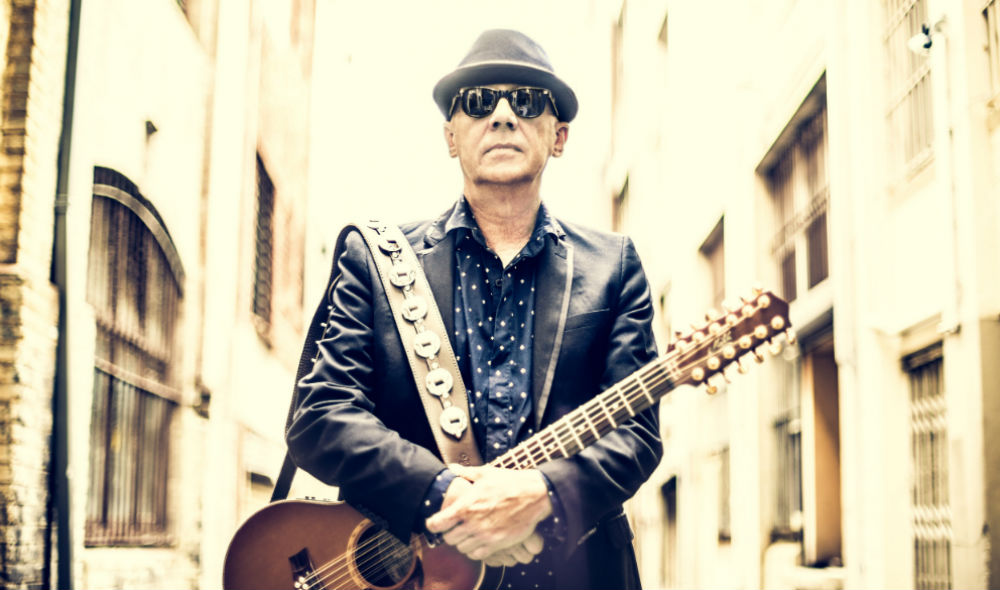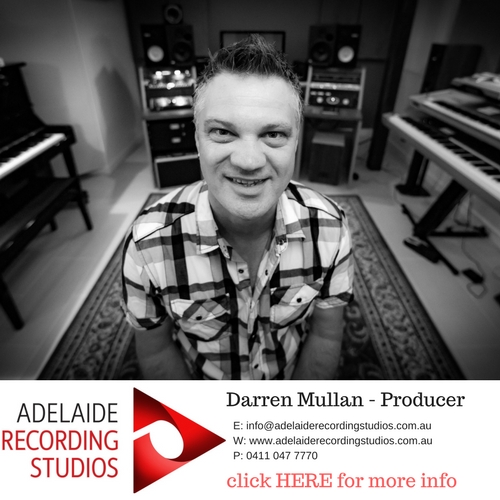by David Robinson.
Russell Morris is an iconic Australian singer and songwriter who enjoyed the success of having five Top 10 singles on the Australian charts during the late ‘60s and early ‘70s. His most recognisable tunes are the likes of Sweet Sweet Love, Wings Of An Eagle and, of course, The Real Thing which was written by Johnny Young and produced by music guru Ian “Molly” Meldrum and featured the musical and vocal talents of some of this country’s finest artists – including Brian Cadd (Axiom, The Groop) and Roger Hicks (Zoot). Enhancing his iconic status, Morris was inducted into the ARIA Hall of Fame in 2008 alongside Max Merritt, The Triffids and Dragon.
Morris is enjoying further success with his most recent albums, Sharkmouth and Van Diemen’s Land, and is now making his way to Adelaide and The Governor Hindmarsh Hotel as part of a national tour.
The Clothesline spoke with Morris over the phone about the tour and his music. After quite a few years of greatest hits and back catalogue shows and recordings – fairly comfortable territory – we asked where the inspiration came from for these two new albums of rock-solid Australian blues? Was it the subject matter that was the major inspiration? Or was he just ready to have a crack at something new?
“When I first started playing music, like many of my contemporaries, my favourite album was The Rolling Stones’ debut,” Morris begins. “It was the first record I ever bought and I just couldn’t believe how great it was. My band and I realised that they didn’t write all their own stuff, so we started investigating the origins of the music. There were songs written by Leadbelly, Howling Wolf, John Lee Hooker and Robert Johnson; people like that. We immediately began playing a lot of rhythm and blues but, at some stage, and quite suddenly, we were seduced by pop music. I had a hit, and we went down that road for a very long time.”
So your latest albums are a bit like returning to an old, lost love?
“When the chart successes eventually stalled, I kept on trying to do albums; I’d put them out and they would sink without a trace,” Morris remembers. “I got to a point in my career when I thought that no matter what I released, no-one was going to be interested. So I decided to record something that I really wanted to do – go back and make a blues album.
“I started writing the songs and I wasn’t completely convinced; I didn’t know if it was going to be right”, he says. “Then while I was on the road, I saw that great photo of Thomas Archer – Shark Jaws – in the newspaper. I was transfixed. Reading the accompanying article brought it home; I wasn’t thinking about turning it into a song. Then one Sunday afternoon, the photo almost spoke to me: ‘Write a song about me. I’m Australian and, if you can, write about your roots and blues, the roots and blues of Australia.’ That’s how it started.
“Most of the historical songs I’d heard up until then were country-ish bush ballads. Not everyone loves that type of music, so blues would be a great alternative for people who want to hear songs about Australia, but in a different genre. This music is every bit as legitimate because blues was around back then.”
These records are, most definitely, legitimate slices of Australian blues. They cover so much musical territory. Was there a deliberate attempt to present as wide a showcase of the genre as possible?
“The first album was supposed to be an urban album about the backstreets and the gamblers; a style that suited those songs,” Morris explains. “On the second album the stories were much broader; tales of the first ships that came out to Australia, about my father, about Eureka and so forth. Some stories were so much bigger than others, so they required a more expansive musical landscape and, occasionally, I moved away a little. But then I would drag it back to the blues, where I wanted it to be. My salute to Robert Johnson, Sandakan, is about my father, and has that authentic sound. Breaker Morant is another one that brings things back to basics, along with Sweetest Thing and Witch of King’s Cross.
“I think the stories usually dictate the way I’m going to go, musically,” he continues. “I think about the story and how it should be heard. When I did Sandakan I wanted it to feel like it was coming from someone lost in the jungle, with a tiny radio, trying to send a message back to base – just like you see in the movies. With the song Van Diemen’s Land I wanted it to feel really big and really ominous.
“The next album will most likely be completely different. I’ll probably go back to basics.”
Speaking of the next record, is it still planned as the third album of a trilogy?
“I always intended to do three albums,” Morris replies. I won’t do any more because I don’t want to be accused of flogging a dead horse.
“I’m working on songs for the album at the moment,” he adds. “They are all rough sketches presently. I’ll probably write about 14 songs. I think I’ve got my direction right but you never know; I might be half way through and write something that makes me take the music somewhere else entirely.”
How does the writing process happen? Obviously there’s research involved in developing these kinds of songs, as well as the creative side of things…
“I set myself goals to try and write,” Morris says. “I wrote Van Diemen’s Land reasonably quickly, in about six months, and then we took about four months to record it. When I write, I tend to read a lot of books, all kinds, and they stimulate my mind. It seems that when I go on a reading frenzy, it helps to produce the words that eventually become my lyrics.
“Occasionally, when you perform a song live, some amateur historian will come up and say ‘Russell, the shearer’s strike actually began in 1878, not 1879 as you’ve just sung. It started on June 15th when a man called Tom Dickinson came down [laughs]’. I know quite a bit about these stories, but it’s also important to research and get the details right. However, I try not to make the songs consist entirely of facts because they become too dry, like muesli,” he jokes. “I have to mix the elements of the story with some poetry and with my own interpretations – a kind of poetic license.”
What kind of band are you taking on tour?
When we recorded Sharkmouth, I said to Mitch (Cairns, who produced the album) that I didn’t want to hear more than four instruments on the album, ever,” Morris says. “That’s all I wanted to hear. Space in music speaks as much as the notes that you play; it’s very important, otherwise it just becomes a big cacophony of rubbish. That was the brief for the first album and that’s how we are live; there are only four of us, we reproduce everything authentically and it sounds pretty good. It’s a great band.”
When performing, are your shows totally focussed on your new material, or do you still play some of the hits from back in the day?
“Live, I have to wear two hats,” Morris explains. “Writing and performing new material is so exciting, but you’ve got to be mindful of the people who’ve spent their hard-earned money to come and see you. I want everyone who walks into the gig to have a fantastic time. I’ll try and deliver everything they want, so I usually include a few songs from the early days.
“I still run into people who ask what I’m doing with myself,” he continues. “When I tell them that I’m playing live, the assumption is that I’m still doing the rounds with The Real Thing. When I tell them that I’ve just had a platinum album, and my most recent CD is about to go gold they are surprised, to say the least! There are still people yet to discover what I am doing now.
“Conversely, there are others who come to gigs that are not really interested in hearing the older songs,” he concludes. “They’re more interested in listening to the new material, which is a wonderful feeling for me after being so long in the music business. As an artist, I love to do new stuff.”
Russell Morris performs at Governor Hindmarsh Hotel from 7.30pm on Fri Aug 22 with special guests. Book at The Gov on thegov.com.au.




